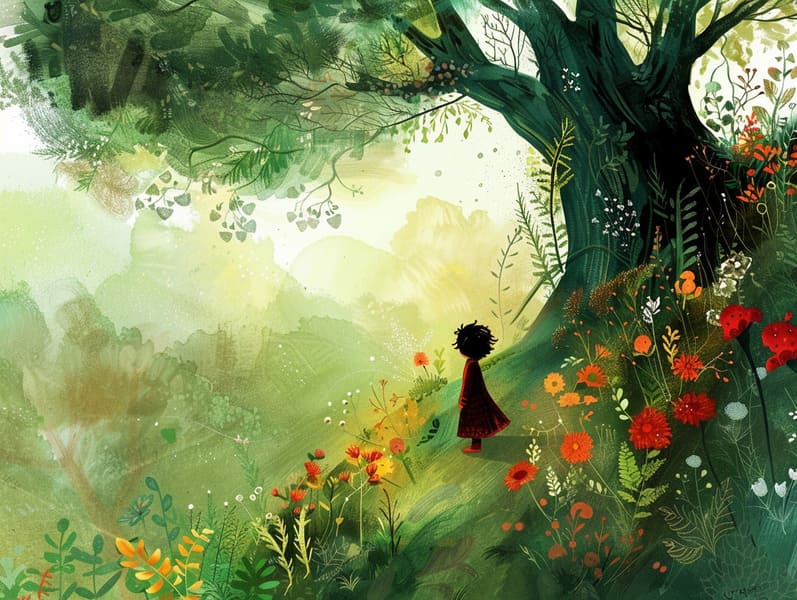Uncovering the Past of Fairy Tales and Its Unceasing Captivation.
Uncovering the Past of Fairy Tales and Its Unceasing Captivation.
Blog Article

Short fairy tales have historical significance. These tales have been conveyed from one generation to the next far before they were ever published. They developed from a variety of civilizations, including American traditions. They were initially transmitted among elders, often carrying themes and messages related to the societal norms and beliefs of the time.
The famous Grimm duo, Jacob and Wilhelm, were among the first to gather many of these beloved tales. Their compilation, "Grimm's Children's Stories," included stories like "The True Bride," "Little Brother and Little Sister," and "The True Story of Snow White," which have since become hallmarks in the world of beloved fairy tales. Similarly, the Danish author's fantastical narratives, such as "The Story of the Little Mermaid," and "The Duckling that Could," have gained the love worldwide, ensuring their place in the pantheon of beloved fairy tales.
Despite being ancient, these stories remain as pertinent as ever, especially as kids' bedtime tales. These enchanting tales are now available in multiple formats, including artistically illustrated books, delightful animations, and web-based fairy tales.
Their enduring popularity can be connected to several magical reasons:
Important Morals: Timeless fairy tales often present important moral lessons. Fairy tales like "The Boy Who Cried Wolf" teach the virtue of honesty, while "The Hare and the Tortoise" emphasize the qualities of tenacity and humility. These narratives offer little ones clear distinctions between moral and immoral, developing their moral compass in a kind yet important way.
Compassion and Knowledge: Classic fairy tales frequently include protagonists facing obstacles and hardships, urging audiences to identify with their struggles and encourage their triumphs. For instance, "Beauty and Her Beast" illustrates the merit of seeing beyond looks to perceive the true character of a soul, advancing insight and comprehension.
Cultural Awareness: Many traditional fairy tales are steeped in the cultural contexts from which they emerged. Discovering these narratives can provide captivating looks into different cultures, cultivating a sense of global insight and appreciation.
Creativity and Fantasy: The enchanted elements in old fairy tales—enchanted forests—ignite children’s visions. These fairy tales transport readers to magical realms, boosting innovative ideas and a sense of enchantment that stays a lifetime.
Classic fairy tales are not only fascinating but also educational. They work as delightful tools in strengthening various mind and heart abilities in kids. When fairy tales are voiced, they foster language skills by introducing new terms and sophisticated sentence structures. This practice also develops auditory perception and concentration, as the young listen intently, prepared to see what happens next.
Furthermore, deliberating the themes and characters of classic fairy tales can develop problem-solving abilities and analytical skills. Children are educated to spot patterns, make predictions, and figure out cause and effect. These debates also advance little ones express their thoughts and feelings, nurturing their emotional intelligence.
In today’s high-tech era, the presence of digital storybooks has made these stories more within reach than ever. Online platforms and web apps feature vast collections of timeless fairy tales that can be enjoyed or heard anytime, anywhere. Fairy tales narrated are particularly well-received, making available an immersive method for young ones to savor these whimsical stories. Narrated books and read-to-me stories take characters and settings to life, often complemented by whimsical background sounds and music that amplify the tale-telling adventure.
The timeless check it out appeal of traditional fairy tales lies in their ability to evolve to the present while preserving their basic principles. Contemporary updates of these fairy tales often feature more representative characters and modern settings, making them meaningful to today’s audience. However, the key lessons of braveness, warmth, and fair-mindedness remain unchanged, continuing to influence young readers of all ages.
Ancient fairy tales also offer a sense of familiarity and familiarity. They bestow a well-arranged narrative with a apparent beginning, middle, and end, often closing with the ending of conflicts and the triumph of virtue over vice. This foreseeability can be calming for kids, showcasing a sense of constancy in an ever-changing world.
Old fairy tales continue to mesmerize and educate new generations, maintaining their captivation and impact in modern society. As bedtime stories for kids, they deliver a perfect blend of fascination and comprehension, encouraging moral values, empathy, and creativity. The prevalence of online storybooks and the widespread nature of fairy tales voiced promise that these ancient narratives remain available to new generations.
By maintaining and divulging these tales, we continue to honor the rich tapestry of fables and cultural heritage. Whether you are delving into a gorgeously illustrated book, delving into a internet collection, or listening on an sound book, the delight of famous fairy tales is always within reach. These fairy tales emphasize of the lasting nature of tales and its ability to unify us across centuries and lands.
If you are browsing a beautifully illustrated book, discovering a online collection, or listening to an read-aloud story, the enchantment of traditional fairy tales is always within reach.
These fairy tales highlight of the consistent spell of narratives and its ability to link us across time and space, creating a bond that charms and informs alike.